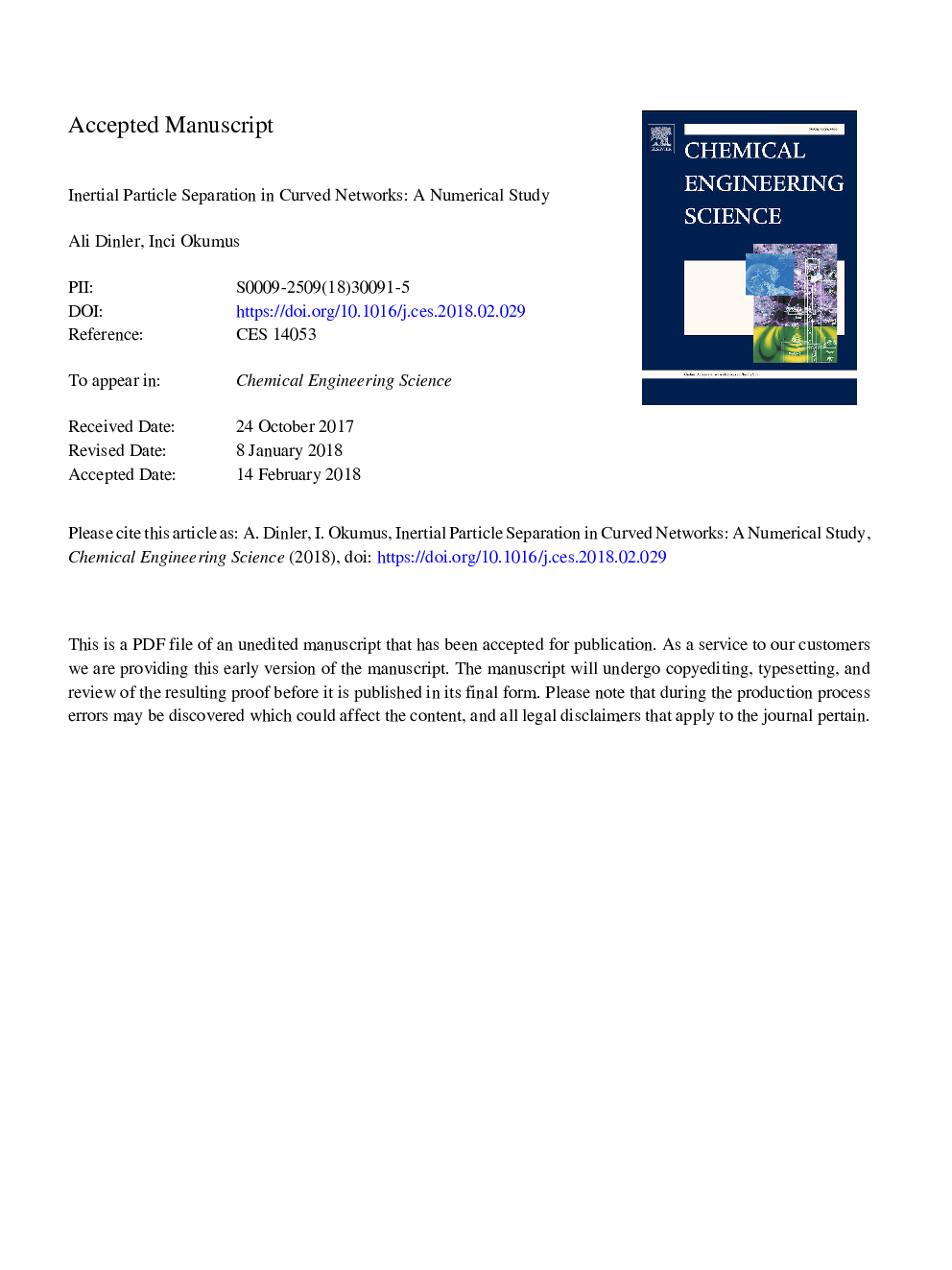| Article ID | Journal | Published Year | Pages | File Type |
|---|---|---|---|---|
| 6588572 | Chemical Engineering Science | 2018 | 41 Pages |
Abstract
To rapidly separate and isolate specific-sized particles by inertial focusing from biological samples, microfluidic networks with curved branches have become subject of prototyping. However, determining the optimal channel dimensions for size-based separation is challenging due to the sophisticated fluid-particle interactions and high sensitivity of the inertial forces to the channel geometry. In the first part of the study, hydrodynamic forces acting upon the particle in the existence of the Dean vortices are modeled and simulated. Simulations are validated with available experimental data. Then, a series of computational experiments is run for various curvatures and cross-section sizes, and translocation of particles through curved branches is projected. Width of the focusing band is predicted for different-sized particles. Occurrences of a narrow (high-quality) focusing, dispersion of the particles (no focusing) and split of the focusing band are also determined. Nevertheless, a considerable pressure drop is expected due to the narrow and high curvature daughters of the considered network. A design rule is not available to resolve this problem and the Murray's law is not valid for curved daughters. Therefore, in the second part of the study, an optimum design formulation for restraining the hydraulic resistance inside such networks is developed and tested. The proposed formulation can be practiced to predict the optimum length, curvature and aspect ratio of the daughter branches for such inertial separation networks.
Related Topics
Physical Sciences and Engineering
Chemical Engineering
Chemical Engineering (General)
Authors
Ali Dinler, Inci Okumus,
